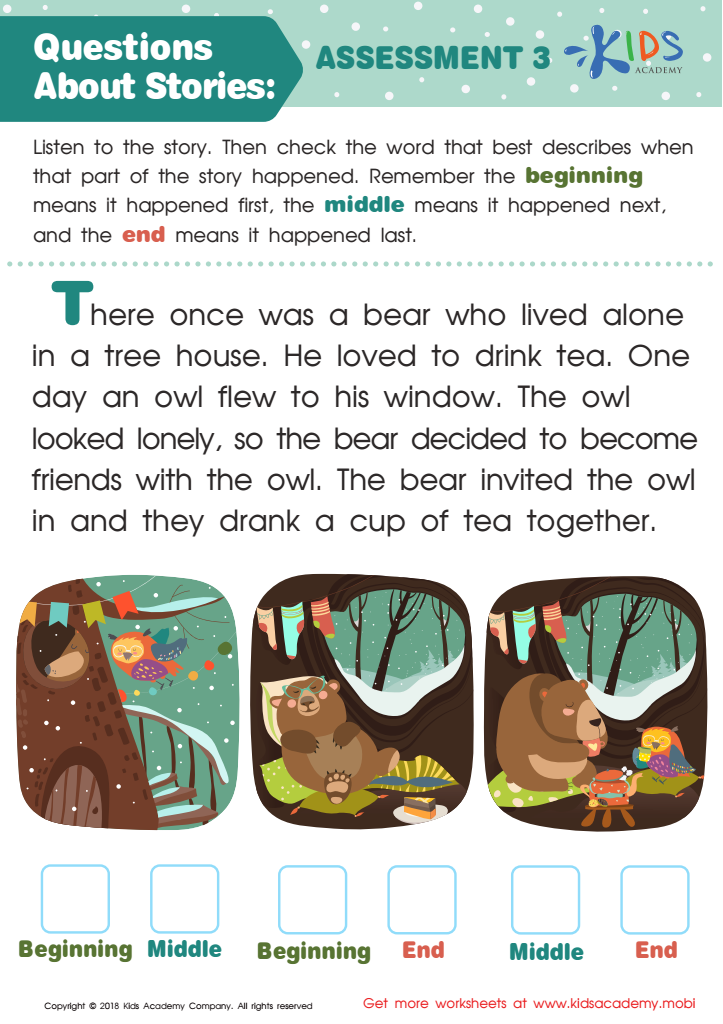Reading Comprehension worksheets activities for Ages 3-8
15 filtered results
-
From - To
Discover engaging and educational reading comprehension worksheets designed specifically for children ages 3-8. Our activities promote early literacy skills through fun, interactive exercises that captivate young learners. Each worksheet is crafted to enhance understanding, vocabulary, and critical thinking, making reading a joyful experience. From matching words to pictures to simple reading passages followed by questions, these resources are perfect for parents and teachers alike. Foster a love for reading in your child while ensuring they build a solid foundation for future learning. Explore our extensive collection of worksheets to help your little ones thrive in their reading journey today!


Craft and Structure: Assessment 2 Worksheet


Craft and Structure: Assessment 1 Worksheet


Spinosaurus Assessment Worksheet


Assessment: First Thanksgiving Worksheet


Questions About Informational Texts: Assessment 1 Worksheet


Craft and Structure of Informational Texts: Assessment 3 Worksheet


Craft and Structure of Informational Texts: Assessment 2 Worksheet


Craft and Structure of Informational Texts: Assessment 1 Worksheet


Craft and Structure of Stories: Assessment 2 Worksheet


Questions About Stories: Assessment 3 Worksheet


Questions About Stories: Assessment 2 Worksheet


Questions About Stories: Assessment 1 Worksheet


Finding the Details and Connections: Assessment 2 Worksheet


Finding the Details and Connections: Assessment 1 Worksheet


Think About It: Assessment Worksheet
Reading comprehension is a fundamental skill that forms the foundation for a child’s academic success and lifelong learning. For children aged 3 to 8, engaging in reading comprehension activities is especially crucial as this is a pivotal developmental stage where they learn to decode words and grasp meanings. Parents and teachers should prioritize these activities to help young learners make connections between the text and their own experiences, enhancing their critical thinking and analytical skills.
Participating in reading comprehension activities fosters vocabulary development and understanding of language structures. As children learn to summarize, predict outcomes, and ask questions about what they read, they develop the ability to think more deeply and express their ideas clearly. This not only boosts their confidence in literacy but also encourages a love of reading, which is essential for ongoing education and personal growth.
Moreover, early comprehension skills correlate with later academic performance, setting a positive trajectory for school success. By integrating enjoyable and interactive reading activities into daily routines, parents and teachers can create an enriching environment that promotes curiosity and cognitive development, equipping children for future challenges. Ultimately, nurturing these skills lays the groundwork for effective communication and critical thinking throughout their lives.
 Assign to My Students
Assign to My Students






.jpg)
















